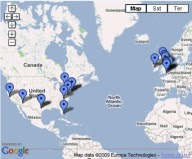The origin of the word "sandwich," we are told, comes from the 18th Century, when John Montagu, 4th Earl of Sandwich, asked his valet to bring him meat between two slices of bread, so he could eat and play cards without getting in a mess. Sandwiches have been a popular way to eat conveniently ever since.
In Britain, not many eat the cucumber or cress sandwich, cut into dainty triangles and with the crust removed, as many imagine ladies of the aristocracy nibble after a game of croquet. However, The British sandwich is typically a thin, rather limp affair, with one slice of meat between two pieces of buttered, sliced bread. Mustard or some kind of pickle relish might be an option, if you're lucky.
In the United States, sandwiches are usually as big, if not bigger than a regular meal. Slice upon slice of meat, often more than one type of meat, are piled high, and with mustard, mayonnaise, etc., added to the equation, eating it can be a messy affair. There are hot sandwiches and cold sandwiches. In typical American style, choosing a sandwich can be a mind-blowing exercise, since you'll have a choice of breads, spreads, meats, accompaniments and condiments.
That's one reason I rather enjoy the "Fat Sandwiches" offered by "Sunshine Burgers," a friendly place in my neighborhood. There is quite a long list of these sandwiches, with such semi-offensive names as "Fat Mom," "Fat Dad," (my daughter loves me ordering that one!) "Fat B*tch" and "Fat B*stard," but you order the sandwich, and get what's listed on the menu. The sandwiches are cylindrical, being served in baguette-like bread, and are a meal in themselves. I do mean a meal; one sandwich can include things like Philly-style cheesesteak, fries, salad, and everything but the kitchen sink.


